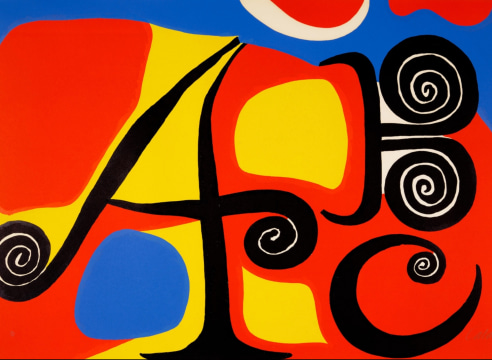
Alexander Calder (1898-1976) is one of the most celebrated sculptors of the 20th century. Born in Pennsylvania, Calder was interested in creating movable objects from a young age, and graduated from the Stevens Institute of Technology in Hoboken, NJ, in 1919, with an engineering degree. He later decided to pursue a career as an artist, and moved to New York City to study painting at the Art Students League. While in New York City, he worked for the National Police Gazette, and was sent on assignment to sketch circuses, a festive motif that would become a famous and enduring subject in his work. Upon moving to Paris in 1926, Calder began creating large-scale mechanical installations of intricate circus scenes, featuring wire sculptures with moving parts that he would operate over a two-hour performance session. Building off of his Cirque Calder, he began sculpting portraits and figures out of wire, and received critical attention, exhibiting these works in subsequent gallery shows in New York, Paris, and Berlin.
He befriended several important Abstract artists in Paris at this time, including Joan Miró and Piet Mondrian, and was invited to join the group Abstraction-Création in 1931. Inspired by the work of his fellow artists, he incorporated abstract, kinetic elements into his sculptures, creating the Mobiles he is best known for today, in addition to his static works, Stabiles. Calder constructed his unique sculptures out of wire, metal, and wood, combining abstract and surrealistic forms with biomorphic imagery in a distinctive style. His structures were carefully weighted and balanced, remaining sensitive to the movement of the wind or the motions of the viewer. Internationally celebrated for his wholly unique, whimsical pieces, Calder produced a wide-ranging body of work during his lifetime, including sculptures, drawings, paintings, jewellery, and set designs. He has had several retrospectives, and, among many other awards, was honoured with the Presidential Medal of Freedom and the Bicentennial Artist Award from the Whitney Museum of American Art in New York City in 1976. He died that same year, at 78 years old.